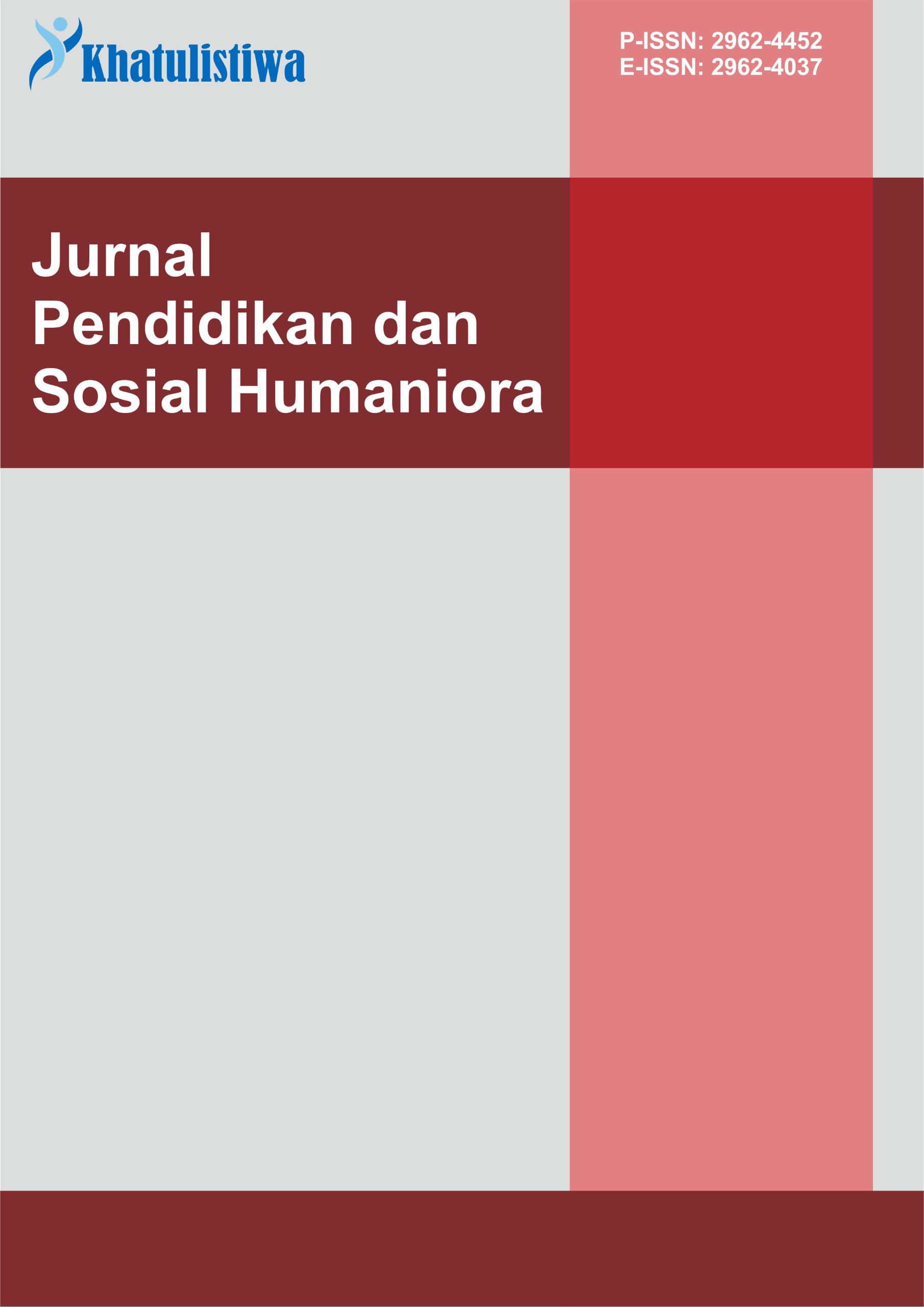Gambaran Kohesivitas Kelompok Teman Sebaya Pada Anggota Komunitas City Bike (CB) Icikiwir Dikota Solo Raya
DOI:
https://doi.org/10.55606/khatulistiwa.v5i4.7791Keywords:
Community Members, Group Cohesiveness, Motorcycle communityAbstract
Group cohesiveness refers to the strong sense of solidarity and unity within a group, reflected through positive interactions, frequent time spent together, and high collective morale. This study aims to explore and describe the group cohesiveness of the Icikiwir motorcycle community members in the Solo area. A qualitative research approach was employed, utilizing in-depth interviews and direct observations involving nine informants, consisting of both members and leaders of the community. The Icikiwir City Bike Motorcycle community was formed not only for recreational purposes but also to establish meaningful social networks, expand friendships, enhance mutual respect, foster cooperation, and increase members’ self-confidence. The findings of this study revealed that six out of the nine informants exhibited strong group cohesiveness. These members actively participated in various community activities, demonstrated loyalty, and worked collaboratively to achieve group objectives. Their involvement contributed to creating a supportive and friendly environment within the community. Conversely, one member showed poor group cohesiveness due to a lack of engagement and minimal attendance in group events. This individual had weaker social bonds with other members, which impacted his sense of belonging. Meanwhile, the two community leaders demonstrated excellent cohesiveness by consistently supporting and embracing all members. Their leadership played a pivotal role in strengthening group unity and promoting inclusiveness. The study concludes that active participation, mutual trust, and inclusive leadership significantly contribute to the development and sustainability of group cohesiveness. These findings underscore the importance of social interaction and shared goals in building a strong, cohesive community, particularly in informal social groups such as motorcycle communities.
References
Bachroni, M. (2011). Pelatihan pembentukan tim untuk meningkatkan kohesivitas tim pada Kopertis V Yogyakarta. Jurnal Psikologi, 38(1), 40–51.
Baron, R. A., & Byrne, D. (2005). Psikologi sosial (Jilid 2, Edisi). Erlangga.
Bungin, B. (2003). Analisis data penelitian kualitatif: Pemahaman filosofis dan metodologis ke arah penguasaan model aplikasi. Raja Grafindo Persada.
Carron, A. V., Bray, S. R., & Eys, M. A. (2002). Team cohesion and team success in sport. Journal of Sport Sciences, 20, 119–126. https://doi.org/10.1080/026404102317200828
Carron, A. V., Eys, M. A., Lougheed, T., & Bray, S. R. (2009). Development of a cohesion questionnaire for youth: The Youth Sport Environment Questionnaire. Sport and Exercise Psychology, 31, 390–480. https://doi.org/10.1123/jsep.31.3.390
Dian, S. (2011). Focus: Jurnal Pekerjaan Sosial, 1(1). https://issn.brin.go.id/terbit/detail/2620-3367
Forsyth, D. R. (2006). Group dynamics. Cole-Wadsworth.
Forsyth, D. R. (2010). Group dynamics (6th ed.). Cengage Learning.
Ghozali, I. (2019). Aplikasi analisis multivariete. Universitas Diponegoro.
Marvasti, A. (2004). Qualitative research in sociology. SAGE Publications. https://doi.org/10.4135/9781849209700
Moelong. (2018). Metodologi penelitian kualitatif (Edisi Revisi).
Muhadjir, N. (1998). Metodologi penelitian kualitatif: Pendekatan positivistik, rasionalistik, fenomenologik, dan realisme metafisik. Yogyakarta.
Mulyono, W. A. (2010). Hubungan spiritualitas di tempat kerja (STK) dengan komitmen organisasi perawat di Rumah Sakit Islam Fatimah Cilacap (Tesis Magister, Universitas Indonesia).
Nazir, M. (2014). Metode penelitian. Ghalia Indonesia.
Papalia, D., dkk. (2008). Human development (Psikologi perkembangan). Kencana Prenada Media Group.
Qomaria, N., Musadieq, M. A., & Susilo, H. (2015). Peranan kohesivitas kelompok untuk menciptakan lingkungan kerja kondusif. eJurnal Administrasi Bisnis, 29(1).
Rachmawati, R. (2009). Hubungan antara adversity intelligence dan persepsi terhadap kohesivitas kelompok dengan organizational citizenship behavior pada karyawan PT. Padma Soode Indonesia (Skripsi, Universitas Sebelas Maret).
Robbins, P. S. (2002). Prinsip-prinsip perilaku organisasi (Edisi Kelima, Jilid 1). PT. Indeks Gramedia Grup.
Sabin, S. I., & Marcel, P. (2014). Group cohesion: Important factor in sport performance. European Scientific Journal, 10(26), 1–12.
Santrock, J. W. (2003). Adolescence (Edisi Enam). Erlangga.
Santrock, J. W. (2007). Adolescence: Perkembangan remaja (Edisi Keenam). Erlangga.
Sari, Y., Erlyani, N., & Akbar, S. N. (2015). Peranan komunikasi interpersonal terhadap kohesivitas kelompok pada komunitas motor di Banjarbaru. Jurnal Psikologi, 2(1), 103–107. https://doi.org/10.20527/ecopsy.v3i1.1936
Sugiharto, S. (2006). Lisrel. Graha Ilmu.
Sugiyono. (2007). Metode penelitian kuantitatif, kualitatif, dan R&D. Alfabeta.
Sugiyono. (2018). Metode penelitian kuantitatif, kualitatif, dan R&D. Alfabeta.
Sugiyono. (2019). Metode penelitian kuantitatif, kualitatif, dan R&D. Alfabeta.
Sukmadinata, N. S. (2009). Metode penelitian pendidikan. Remaja Rosdakarya.
Wahidah, N. (2013). Hubungan antara kohesivitas kelompok teman sebaya dengan perilaku agresif pada mahasiswa Fakultas Teknik Universitas Muslim Indonesia Makassar (Skripsi), 17–22.
Wijayanto, S. (2012). Pengantar manajemen. PT. Gramedia Pustaka Utama.
Yusuf, P. M. (2014). Metode penelitian kuantitatif, kualitatif & penelitian gabungan. Prenada Media Group.
Downloads
Published
How to Cite
Issue
Section
License
Copyright (c) 2025 Khatulistiwa: Jurnal Pendidikan dan Sosial Humaniora

This work is licensed under a Creative Commons Attribution-ShareAlike 4.0 International License.








